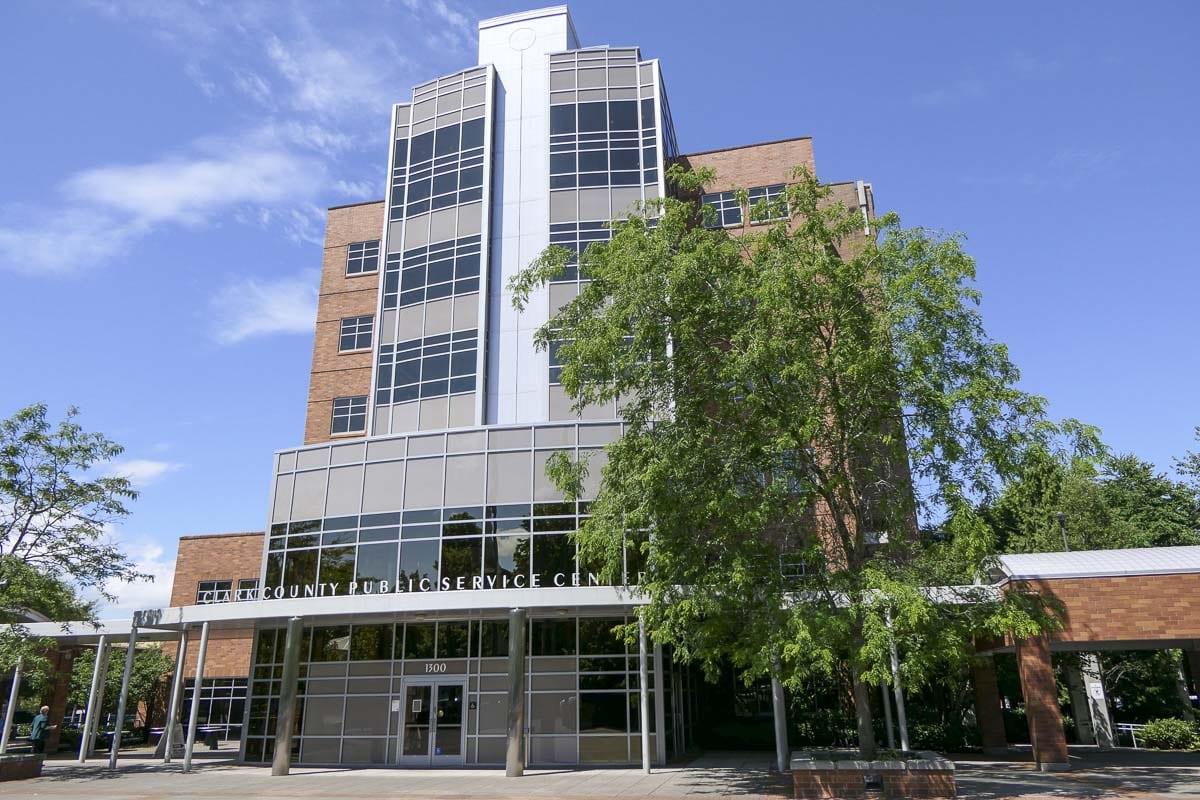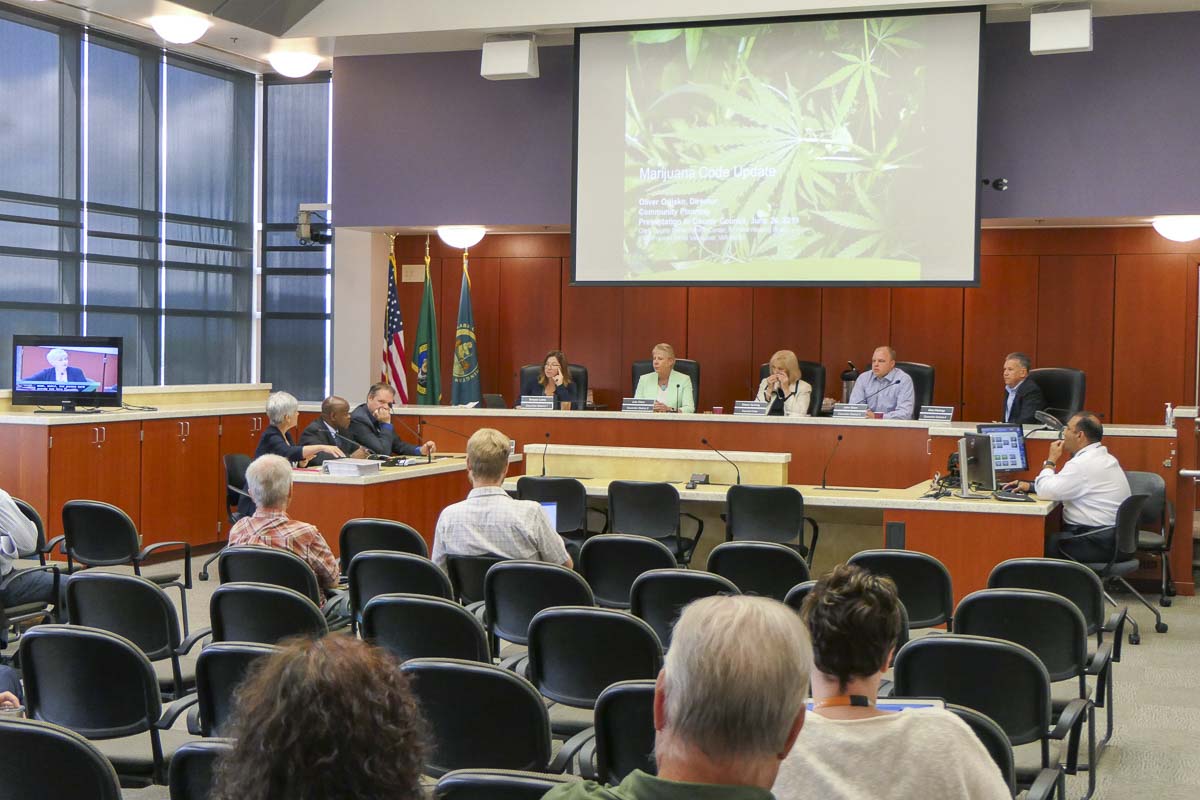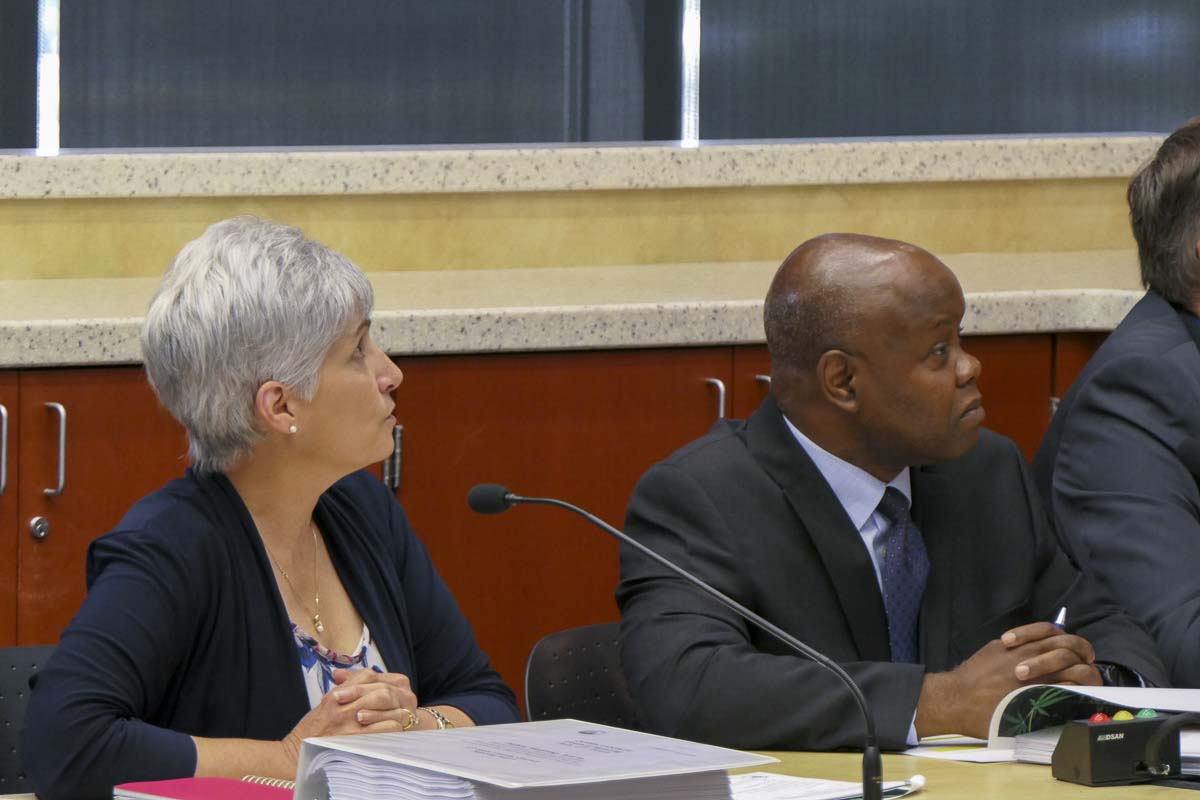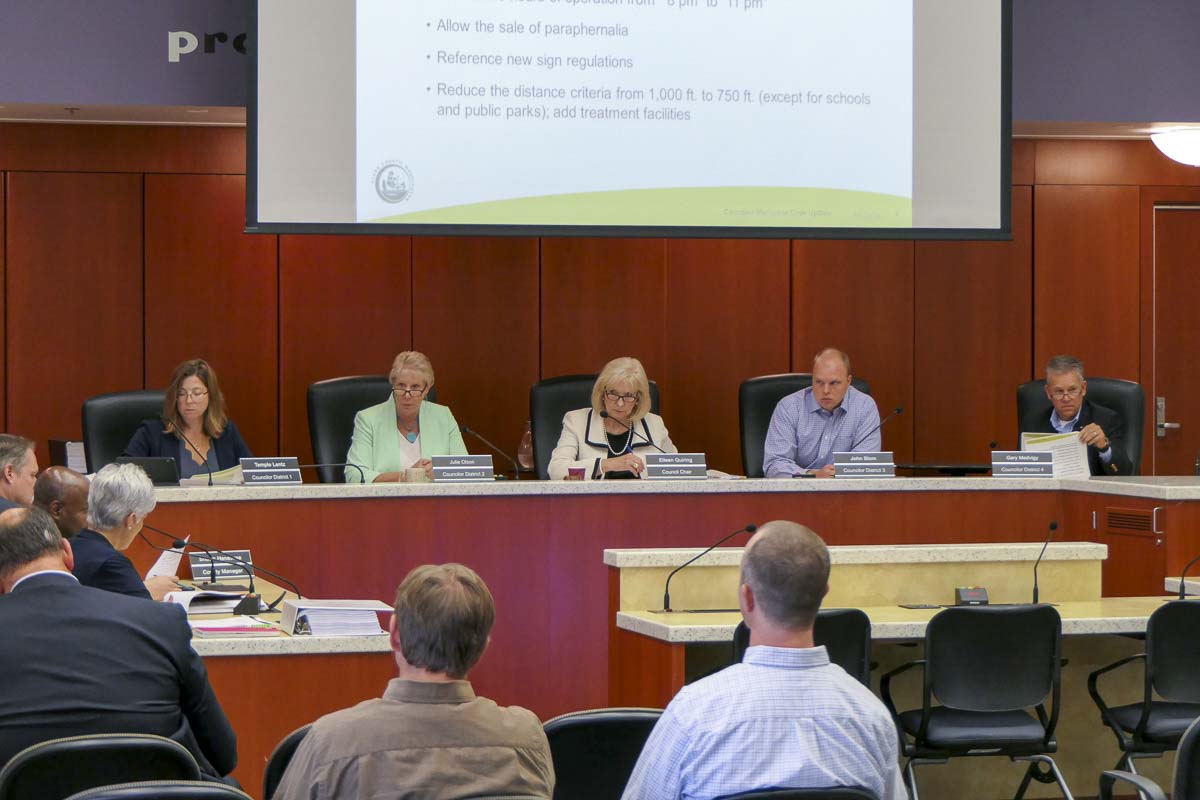The county’s Planning Commission voted 3-2 earlier this month to recommend overturning the 2014 ban
CLARK COUNTY — The Clark County Council is set to finally hear from the public, and potentially decide on the future of marijuana-related businesses at its first meeting in July.

This latest discussion around the 2014 moratorium on pot-related businesses in the unincorporated parts of the county began last April with the first of two work sessions for the council. Earlier this month the County Planning Commission recommended 3-2 to reverse the ban, with some modifications to existing code.
Under the Planning Commission’s recommendations, businesses that grow, produce, or sell marijuana would be allowed, but medical marijuana co-ops would continue to be banned. They would reduce the minimum parcel size for marijuana growers and processors on agricultural or forest resource zoned land from 10 to five acres. The commission would remove Industrial Railroad land from the approved list of zones for marijuana production.
Marijuana retail businesses would be allowed in General Commercial or Community Commercial zones, but not in Rural Centers (CR-2).

Among the most controversial of recommendations surrounds buffer zones. While state law mandates that any marijuana-related business be at least 1,000 feet from elementary or primary schools or public playgrounds and parks, the county can set limits for other businesses. The Planning Commission recommended that the buffer for anything outside of those mandated by the state be set at 750 feet.
Colete Anderson, a community planning manager for the county, said the smaller buffer was introduced as a way of opening more potential locations for businesses.
“The other thing to think about too, is that there’s a limited number of licenses available,” Anderson told the council at a work session on Wednesday. “So for retail, as an example. There are only three retail licenses in unincorporated Clark County that has been issued. And so if you were to keep the thousand foot buffer, they would have a potential of 239 potential locations to locate.”
At the request of council, Clark County Geographic Information Services (GIS) put together an interactive map that shows the likely buffer zones based on distances of 1,000, 750, 500, and 100 feet.

At the Planning Commission’s June 6 meeting, a number of marijuna business owners advocated for changing the way buffers are measured from the current method of property line to property line, in favor of door-to-door, but the commission said legal council determined state laws don’t allow for that change.
At Wednesday’s council work session, Councilor Gary Medvigy said he had heard from several people concerned that the 750-foot buffer was intended to benefit a single business.
“I couldn’t remember where that adjustment came from and why,” Medvigy said, “but certainly, it shouldn’t benefit one particular retailer over the business interests of the general group that’s out there that may have permits.”
District One Councilor Temple Lentz, the most vocal supporter of lifting the ban on the council, said they had been contacted by a number of people requesting that buffer distances be examined.
“And we’ve been contacted by people who have certificates, which means they’re not currently in operation, people who have permits, and they talked about, there is a limited amount of area that these facilities can be cited in,” Lentz said. “And at 1000 feet, we further limit the ability for them to find suitable spaces. So they asked us to take a look at the possibility of reducing it for the ones that we can reduce it for, in order to see if and how that opened up more potential commercial space.”

Council Chair Eileen Quiring then wondered out loud if the business in question was Sticky’s, a pot shop that operated along Highway 99 in Hazel Dell for over a year in defiance of county code, before ultimately losing a legal battle at the State Supreme Court.
“I’m not aware of that, councilors,” responded Oliver Ojiako, community planning director. “I don’t think it’s Sticky’s.”
Staff did note that the initial estimate of 239 available locations, based on the 1,000 foot buffer, is only an estimate. Any business applying for a permit would need to verify that their intended location doesn’t fall within any restricted areas.
The council will take up the code changes at its meeting at 6 p.m. on July 2.




